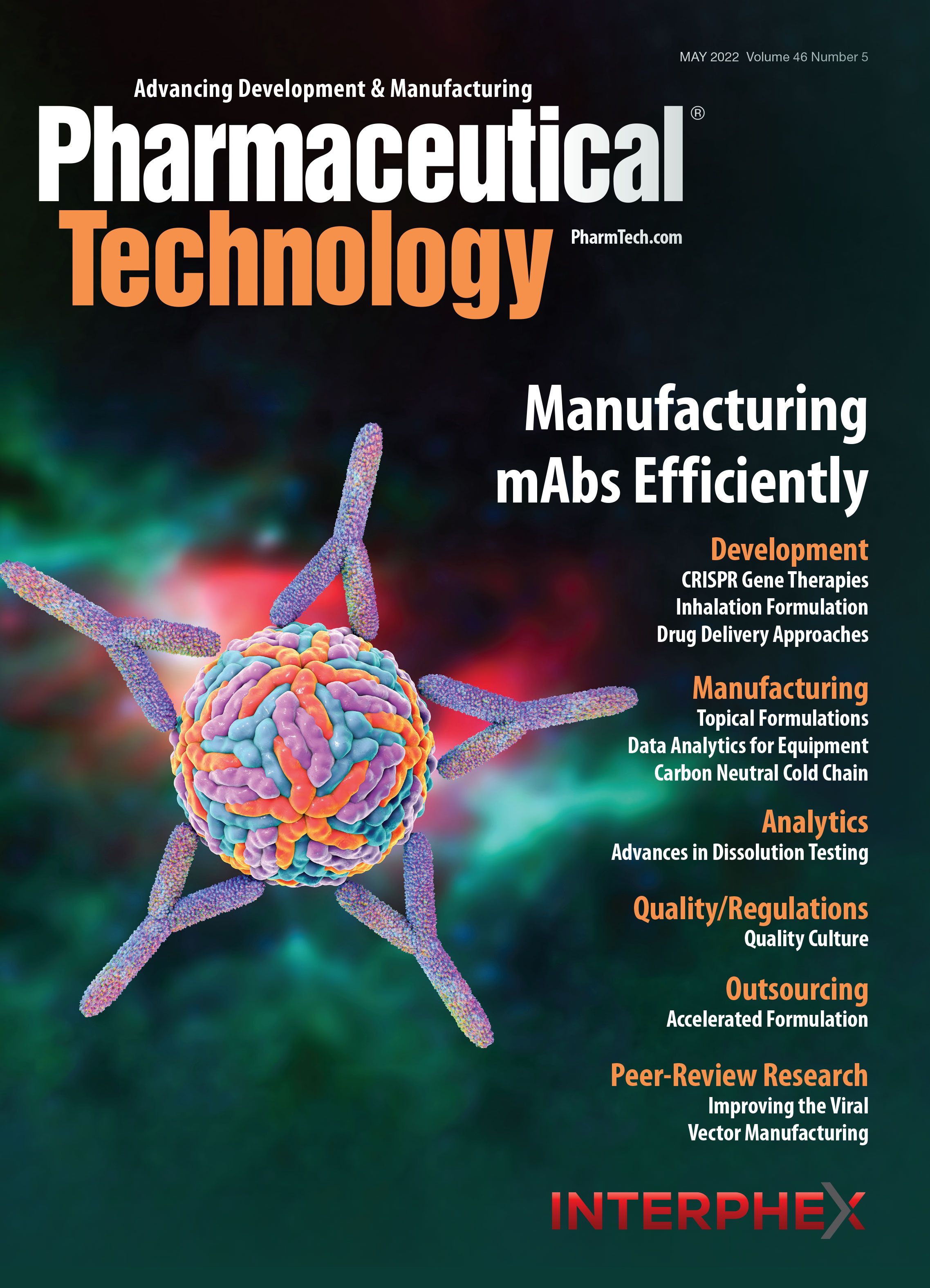Advances in Dissolution Testing
Recent trends in dissolution testing have led to increased use of data integrity solutions and more biorelevant testing techniques.
YASHKIN ILYA - ADOBE.STOCK.COM

Like most sectors of the pharmaceutical industry, the dissolution testing space is in a constant state of flux and evolution. With everything from real-time release testing to automated regulatory audit trail software continuing to gain
prominence in the sector, an in-depth look toward the future of dissolution testing is needed for those seeking comprehensive understanding of the industry.
Pharmaceutical Technology spoke with Ishai Nir, small-molecule products manager at Distek, a manufacturer of dissolution and related laboratory testing instruments, to get a perspective from an industry insider on the state of dissolutions technology. The discussion touches on recent innovations, ongoing trends, and the future of the dissolutions testing industry.
Recent innovations
PharmTech:What are some recent innovations you have observed in the dissolution testing space, if any? How would you describe their impact?
Nir: Dissolution is a well-defined test with both instrumentation and testing methodology specified in great detail by the USP [US Pharmacopeia). So, for existing formulations there is not a lot of opportunity for innovation. However, as the expression goes ‘all the BCS class 1 and 3 drugs have already been discovered.’ This leaves new, challenging formulations with poor solubility or permeability which in turn require new formulation and delivery methods that may require changes in their corresponding performance tests.
For example, solubility is inversely related to particle size. This has led to multiple submicron dosage forms. However, conventional dissolution methodology breaks down at this scale because it becomes impossible to use conventional filtering techniques to remove undissolved API from collected dissolution samples waiting to be analyzed.
A recent stimuli article in the USP Pharmaceutical Forum addressed all the new non-compendial techniques being employed to address this problem. Some of these have already been commercialized as accessories to existing dissolution equipment. There are other novel dosage forms that will be delivered other than orally, such as long acting parenterals, transdermal microneedles, inhalation, etc. that will equally require some new or modified dissolution testing solutions (1).
Trends and shifts
PharmTech: Are there any trends you see occurring in this space? Are there any trends that you’ve seen ending?
Nir: There are two major trends that will strongly affect dissolution testing. The first is the inclusion of dissolution testing into the comprehensive data integrity solution used by the lab, and with it true 21 CFR [Code of Federal Regulations] Part 11 compliance. As dissolution instrumentation moves away from error-prone manual operations to software driven automation, more and more steps of the process, such as media preparation and dissolution testing and sampling, will join sample analysis as falling under the auspices of these data controls. This will mean that some of the current testing industry band-aids and ‘partially compliant’ solutions will have to be replaced by robust systems.
The second is a push by FDA to move away from a simple single or a few measurements of a straight in-vitro dissolution test and towards testing that is more biorelevant. This takes two forms. First, increasinglythere will be a move towards creating in-vitro tests that will be more sensitive to changes that will affect in-vivo behavior. At least in development stages, there is already an increasing requirement to show that a test is not only sensitive to manufacturing variation, but sensitivity to parameters which can affect bioequivalence.
The impact of COVID-19
PharmTech: We recently passed the two-year anniversary of the COVID-19 pandemic. Now that we have a clearer idea of its short-term/immediate impacts, are there any longitudinal effects you see it having on your industry?
Nir: As with many other industries, one thing that COVID has led to is a rethinking by the pharmaceutical industry of the acceptability of remote access. Pre COVID, most companies would have not even considered allowing any kind of external Internet access to any of their machines or data. Similarly, any cloud-based solutions that would have been entertained would have had to be locally hosted.
COVID forced many companies to accelerate acceptance and implementation of these external access strategies. As a result, things like remote instrument monitoring, maintenance, validation, and possibly repair, software as a service, etc. start becoming subjects of discussion. Together with the move to software control discussed previously, this may make these concepts palatable and applicable to pharma the way they are accepted as de facto in many other industries. Obviously, this is not unique to dissolution testing, but pharma manufacturing as a whole.
Looking to the future
PharmTech: Regarding the future of your industry, what do you see as the next big change? Do you have any predictions in particular?
Nir: One paradigm shift gaining some traction in the not-too-distant future is an increase in the implementation of continuous manufacturing. This is a shift from batch manufacturing, where dissolution testing can be done between batches, to truly continuous manufacturing where all of the characterization of samples needs to be somehow done in real time. This may require a shift to using inline process analytical technologies based on correlation modeling with traditional destructive offline physical tests.
Reference
1. M.G. Wacker et al., USP Pharmacopeial Forum (PF) 47 (6) November 2021.
About the authors
Grant Playter is the Assistant Editor at Pharmaceutical Technology.
Article details
Pharmaceutical Technology
Vol. 46, No. 5
May 2022
Pages: 52-53
Citation
When referring to this article, please cite it as G. Playter, “Advances in Dissolution Testing,” Pharmaceutical Technology 46 (5) 32-33 (2022).
